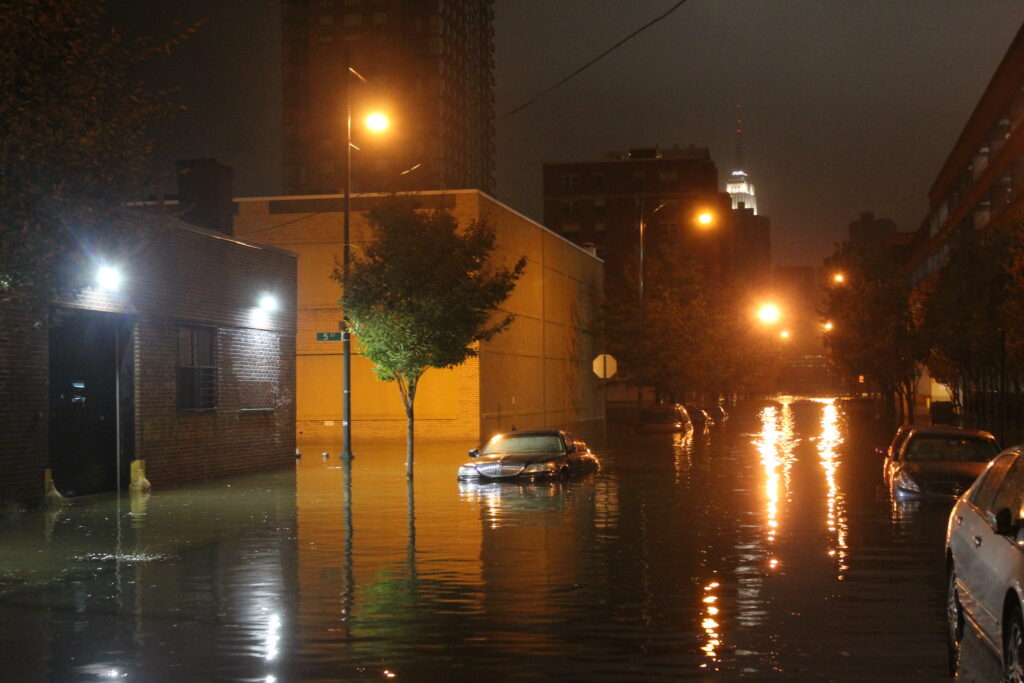
Superstorm Sandy was the deadliest hurricane of 2012 and one of the most destructive hurricanes ever to hit the United States. According to the National Oceanic and Atmospheric Administration, Superstorm Sandy caused an estimated $74.1 billion dollars in damages. That figure made it the fourth-costliest storm in U.S. history, trailing only Hurricane Katrina in 2005 and hurricanes Harvey and Maria in 2017. Superstorm Sandy affected 24 states and all of the eastern seaboard.
New York was one of the states pummeled by Superstorm Sandy. The storm brought flood-levels to the region that had not been seen in generations. But according to a new study published in the journal Climatic Change, those flood levels could become much more common.
Researchers at Stevens Institute of Technology have found that 100-year and 500-year flood levels could become regular occurrences by the end of the century for the thousands of homes surrounding Jamaica Bay, NY. The researchers say climate change is the culprit.
Using anticipated greenhouse gas concentration levels, the research team created simulations to find the probability of different flood levels being reached by the end of the century. The researchers found that the historical 100-year flood level would become a one-year flood level by the year 2100. 500-year floods, like Superstorm Sandy, would become a four-year flood level by the end of the century.
While this particular study is specific to Jamaica Bay, it does serve as an example of just how severe and costly the consequences of climate change will be.
*********
Web Links
Once in a lifetime floods to become regular occurrences by end of century
Photo, posted October 29, 2012, courtesy of Rachel via Flickr.
Earth Wise is a production of WAMC Northeast Public Radio.
Leave a Reply